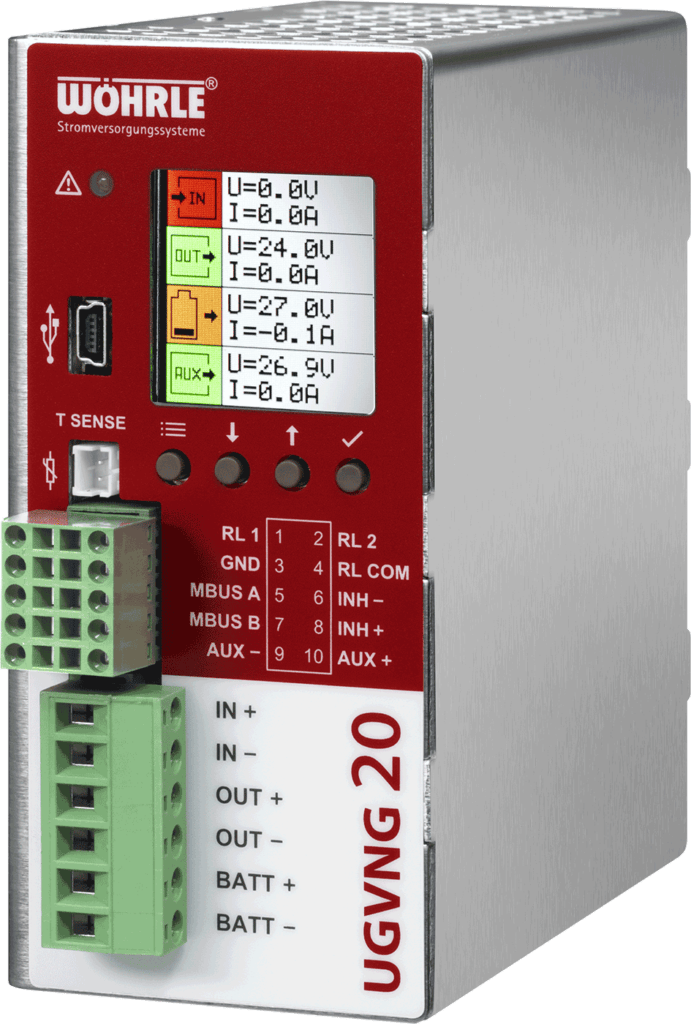Uninterruptible power supply in extreme weather conditions

Icy & windy - power supply on the rooftops of the world
Ice, wind and sub-zero temperatures - technology at high altitudes has to withstand adverse conditions. And yet it is indispensable. For example, weather stations on the summits are needed to record weather data for research in high-altitude areas. At altitudes such as the Himalayas, reliable data for climate research can be collected by measuring wind currents. Statements about the behavior of glaciers and the effects of global warming can be made more reliably with weather data from the highest altitudes.
Extreme weather conditions for power supply systems
The weather conditions on the roofs of the world are different to those at lower altitudes. The altitude, thinner air and lower temperatures have an impact on functionality. These extreme environmental conditions such as wind and sub-zero temperatures pose particular challenges for weather stations. To be more precise, not only the weather station, but also the power supply for it. An uninterrupted power supply is also essential under the conditions at high altitudes. If the power fails unexpectedly, the weather station must continue to be supplied. This is ensured by UPS systems. High up at the highest altitudes, the components for an uninterruptible power supply face new challenges. In cities at altitudes of over 2,000 meters, conventional switch-mode power supply units already reach their limit. These are usually designed for lower altitudes
Why does height play a role at all for switching power supplies?
Most electronic devices use air for insulation. The density of the air and its dielectric strength are decisive factors for the insulating capacity. As altitude increases and the air becomes thinner, the dielectric strength decreases, which in turn influences the insulating capacity. Environmental conditions are the decisive factor in the development of such a project. High up with a view over the world, other standards apply. These circumstances must be taken into account in the derating calculation - the reduction in performance due to the ambient temperature. For example, temperature derating increases at higher altitudes due to the reduced density and thus the reduced cooling effect of the air.
The Wöhrle solution
To solve this problem, a special circuit design was developed with a 50 % greater distance between the conductor tracks and the components. The lower dielectric strength of the air is compensated for by the greater distance, which increases electrical safety. It is not only the thinner air that affects the uninterruptible power supply. The extreme sub-zero temperatures that prevail on the world's mountain peaks also have an impact on the system. The cold is particularly hard on the batteries. For Cyclon cells in combination with a specially developed battery management system (BMS), a temperature range down to -40 °C is no challenge and the batteries can withstand the cold. The energy storage system does not have to be constantly replaced and the service life can be designed for several years, depending on the solution and usage. If required and depending on the application, it is also possible to integrate the energy storage unit into the compact housing. In detail, this means A programmable DC UPS application with TFT display can operate an input and output voltage of 12 to 48 volts DC. At the same time, this system has an internal DC-DC converter. The autonomy time can be implemented variably, from milliseconds to minutes or hours, everything is possible. This means that in the event of a power failure, the safety-relevant system can be supplied for the duration of the corresponding autonomy time - even at the highest altitudes. From the Swabian town of Steinenbronn near Stuttgart out into the world. With its intelligent special solutions, Wöhrle ensures an uninterruptible power supply. Special requirements or special requests in all areas, a solution is always found.
Special features of our DC UPS systems:
- Upgrade with SMP adapter
- Relay outputs
- Potential-free contacts
- Compact housing with small dimensions
Support for different storage technologies:
- Lead acid
- NiMH
- Cyclone
- Lithium battery
- Supercapacitors
The UPS system also serves as a power supply unit and charger.

